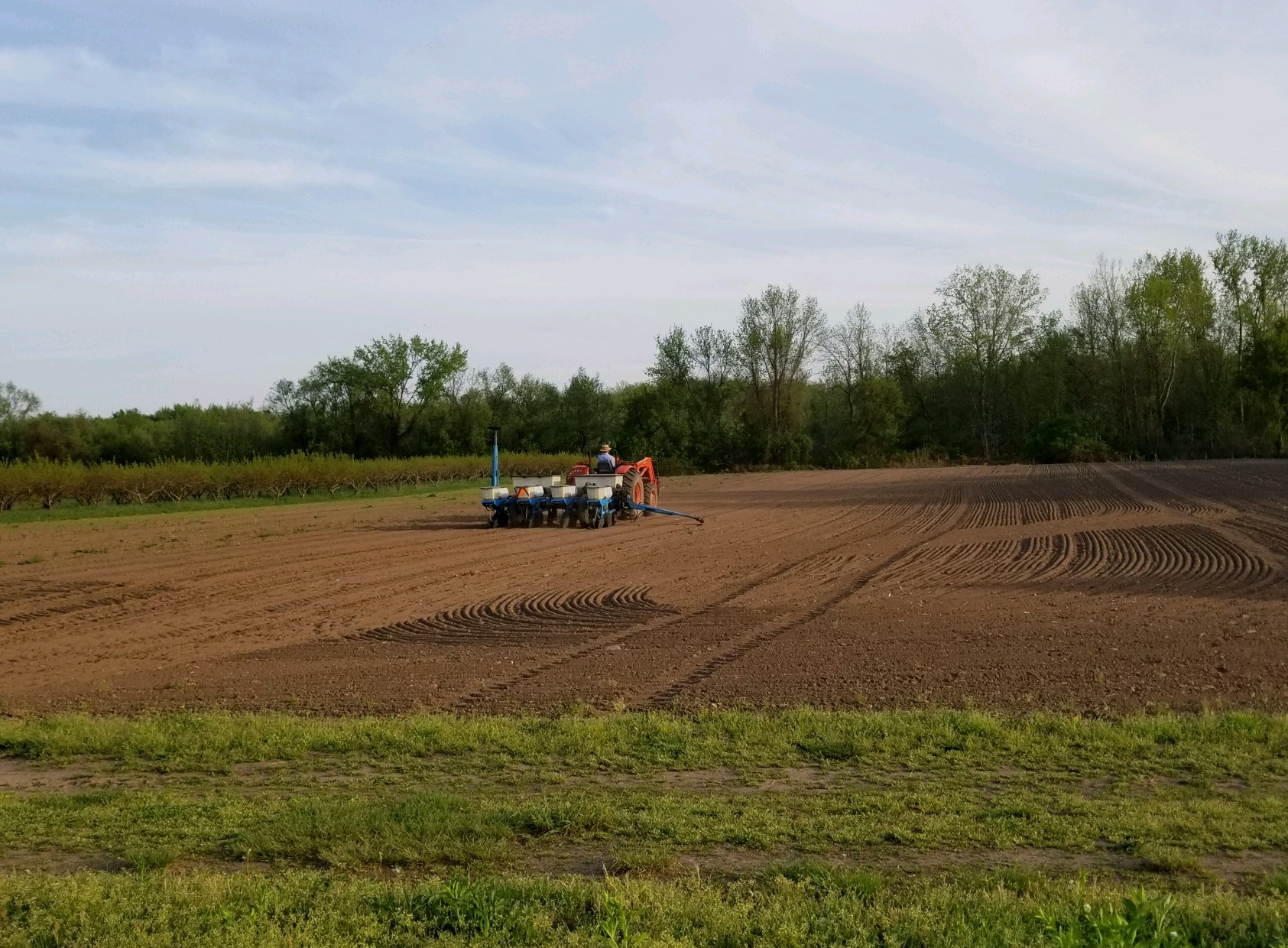My evening view from the seat of a tractor
A beautiful sunset over our Albion farm. As you can see in the foreground, we are performing some serious renovation on the land. A couple years ago we overhauled a tiling machine that had been in our family since the 1970s. It digs a trench and lays a large perforated pipe in the bottom of it. Then we have to go over the entire trench and fill it back up with soil. Once it is in place and functioning, this tile will help remove any extra water in the ground that would make it too wet. It is quite an investment to install, but proves to be a priceless tool once it is in place.
A lone honey bee sucking up the nectar and collecting pollen on her legs.
This sunflower I'm sure has been loving all the sunshine we have been getting. Only because I have been giving it all the water it needs! For a good amount of time in July I was consumed with irrigation. Irrigating apple and peach trees, our new strawberry planting, the broccoli, the sweet corn, everything!
A baby ear of corn, just pushing out it's silk to be pollinated.
For me, it's hard to imagine that this tiny ear of corn will be transformed into a fully mature ear, ready to eat in only 20 days. Nature never ceases to amaze me. All it takes is three weeks for it to become thrice as juicy, and grow ten times it's weight! And 20 times as delicious in my opinion. I recently learned that this is indeed where the baby corn in asian cuisine such as stir fry comes from! It is no trick, simply baby corn (baby carrots are usually just chopped and ground down large carrots).
The growing point of this pickle plant is attempting to escape the trellis we have it wrapping around.
The high tunnels certainly have exploded with growth and fruit over the past month or so. The plants are so carefully protected, fed, and watered that they are producing nearly perfect fruit, as you can see in the following images. I'll leave them nice and big so you can enjoy them as much as possible. :)
Seedless pickling cucumbers (pickles) from the high tunnel.
A red beefsteak tomato ripe for the picking.
Fruit Update
Starting from the left, we have a branch where a sweet cherry used to be, now happily harvested. Next is a beautiful Garnet Beauty peach, ripe and probably picked today. After that is a prune (plum) deceitfully purple, but so very green inside. And lastly, we have some gingergold apples, ready to pick in maybe three weeks!
Thank you for reading!































![IMG_20170918_201903[1].jpg](https://images.squarespace-cdn.com/content/v1/54244572e4b0b6739e3b8629/1505827002269-9H79EEWPDOKE3X6US9H7/IMG_20170918_201903%5B1%5D.jpg)
![IMG_20170918_172606[1].jpg](https://images.squarespace-cdn.com/content/v1/54244572e4b0b6739e3b8629/1505827135010-APAEKQM60USW4Z3FAJW3/IMG_20170918_172606%5B1%5D.jpg)
![IMG_20170918_202223[1].jpg](https://images.squarespace-cdn.com/content/v1/54244572e4b0b6739e3b8629/1505827042042-U6DHQ8UW7B7EPEMVW4KP/IMG_20170918_202223%5B1%5D.jpg)














































